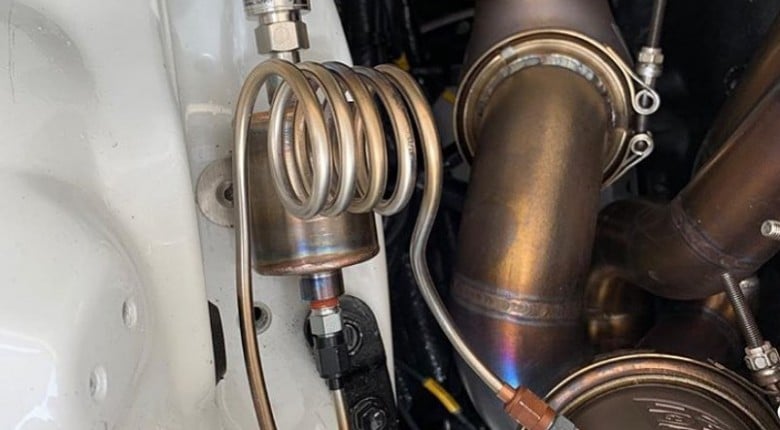When sizing a turbo your exhaust manifold back pressure (EMAP) can help give you the data you need in order to know if you are getting all right, or all wrong.
While it’s not a common input in most street cars, turbine inlet pressure (TIP) or exhaust manifold pressure (EMAP) is a useful input when it comes to analysing your turbo sizing and performance in high end race engines. It’s not uncommon with factory turbocharged engines to find that the EMAP is double the boost pressure seen in the intake manifold (sometimes even more!). This in particular affects the amount of overlap we choose (the period when both the intake and exhaust valves are open) when selecting a suitable cam profile.
On a dedicated drag engine, we often see the EMAP is less than boost pressure which allows the use of much more aggressive cam profiles and this can offer the potential for more power. The downside however is that the lower EMAP provides less energy to drive the turbine wheel and hence the boost threshold moves higher in the rev range.
As with everything to do with engines, turbo sizing is a compromise. One of the issues with measuring EMAP is that we can’t just screw a pressure sensor into the exhaust manifold due to the temperature of the exhaust gas. A simple solution is to use a short length of copper pipe to connect between the sensor and manifold. If you’re limited on space then you can loop the pipe to help add length to the pipe and radiate the heat from the exhaust gas as well as use of a damper to help ensure a clean, usable signal.
------------------------------------
TIME STAMPS:
0:00 - EMAP: Exhaust Manifold Backpressure
0:09 - What Does It Mean?
0:19 - Drag Racing Example
0:28 - Street Driven Car Example
0:39 - How Do We Get That Data Though?
0:52 - Remote Mounting
1:03 - Heat Dissipation
1:16 - Data Analysis
1:23 - Not Always Required
1:35 - EFI Tuning Lessons
------------------------------------
Want to learn how to EFI tune? Start with some free lessons right here.






Comments
No one has commented on this page yet.